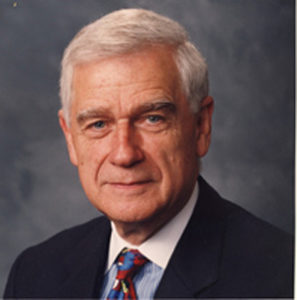Quote of the week:
“People understood that when lives are given on their behalf they have received something precious. Ceremonies are a way to give something precious in return.”
— Robin Wall Kimmerer, Braiding Sweetgrass (2013)

Editor’s note: Dan Caldwell is a superb teacher, a prolific author, and a wonderful friend. At this time of remembrance of those who have served in harm’s way on distant battlefields, I am reprinting Dan’s remarks on the occasion of the Mark O. Hatfield Lecture on Capitol Hill on October 6, 2014. The messages he conveyed then are timeless and worth hearing again. Mark Hatfield was a Republican Senator from Oregon who, along with many others, including two other future Senators, Dale Bumpers, a Democrat from Arkansas and Charles “Mac” Mathias, a Republican from Maryland, were on their way to participate in the invasion of the home islands of Japan when the war was abruptly ended by the bombings of Hiroshima and Nagasaki. Senator Hatfield was instrumental in Congressional efforts to halt US nuclear testing. Dan’s family connections and remembrances make for a compelling story on this Memorial Day weekend. — MK
At the end of World War II, a number of American military personnel saw first-hand the devastation that the United States had wrought at Hiroshima and Nagasaki, and the human and physical destruction that they saw deeply and profoundly affected some for the rest of their lives. Among these were Senator Mark O. Hatfield, Los Angeles businessman and peace activist Harold Willens, and Harvard Professor John D. Montgomery.
War can, and often is, mentally, emotionally, and/or physically disabling; however, for Hatfield, Willens, and Montgomery, the indelible memories of Hiroshima proved to be enabling rather than disabling. This talk traces their transformation from warriors into peacemakers.
When Mark Hatfield signed up for the Navy, he was following the precedent set by his father who had also been a Navy man. After completing his training and earning his officer’s commission at Lake Champlain, the Navy sent Ensign Hatfield to Coronado, California, and assigned him to be a “wave commander.” At first, the young officer thought that he had received the best assignment in the Navy: to command a group of Navy women, then called the WAVES, but this was far from the case.
Continue reading on Arms Control Wonk.
Michael Krepon is Co-Founder of the Stimson Center.

On Memorial Day, Remembering Mark Hatfield and Others Who Served
By Michael Krepon
In
Quote of the week:
“People understood that when lives are given on their behalf they have received something precious. Ceremonies are a way to give something precious in return.”
— Robin Wall Kimmerer, Braiding Sweetgrass (2013)
Editor’s note: Dan Caldwell is a superb teacher, a prolific author, and a wonderful friend. At this time of remembrance of those who have served in harm’s way on distant battlefields, I am reprinting Dan’s remarks on the occasion of the Mark O. Hatfield Lecture on Capitol Hill on October 6, 2014. The messages he conveyed then are timeless and worth hearing again. Mark Hatfield was a Republican Senator from Oregon who, along with many others, including two other future Senators, Dale Bumpers, a Democrat from Arkansas and Charles “Mac” Mathias, a Republican from Maryland, were on their way to participate in the invasion of the home islands of Japan when the war was abruptly ended by the bombings of Hiroshima and Nagasaki. Senator Hatfield was instrumental in Congressional efforts to halt US nuclear testing. Dan’s family connections and remembrances make for a compelling story on this Memorial Day weekend. — MK
At the end of World War II, a number of American military personnel saw first-hand the devastation that the United States had wrought at Hiroshima and Nagasaki, and the human and physical destruction that they saw deeply and profoundly affected some for the rest of their lives. Among these were Senator Mark O. Hatfield, Los Angeles businessman and peace activist Harold Willens, and Harvard Professor John D. Montgomery.
War can, and often is, mentally, emotionally, and/or physically disabling; however, for Hatfield, Willens, and Montgomery, the indelible memories of Hiroshima proved to be enabling rather than disabling. This talk traces their transformation from warriors into peacemakers.
When Mark Hatfield signed up for the Navy, he was following the precedent set by his father who had also been a Navy man. After completing his training and earning his officer’s commission at Lake Champlain, the Navy sent Ensign Hatfield to Coronado, California, and assigned him to be a “wave commander.” At first, the young officer thought that he had received the best assignment in the Navy: to command a group of Navy women, then called the WAVES, but this was far from the case.
Continue reading on Arms Control Wonk.
Michael Krepon is Co-Founder of the Stimson Center.